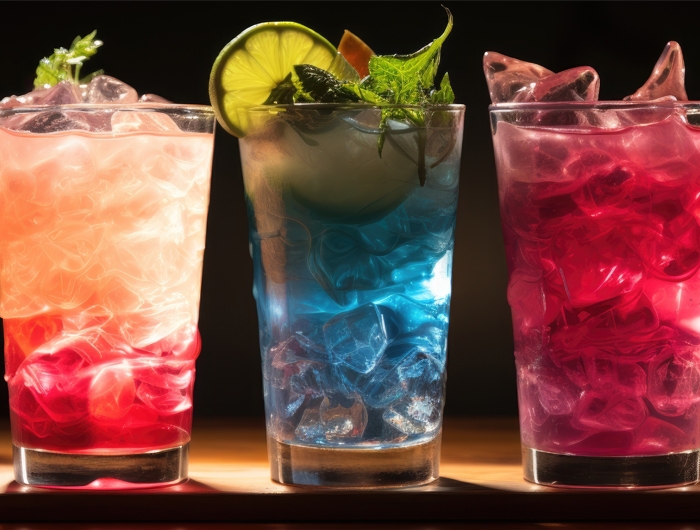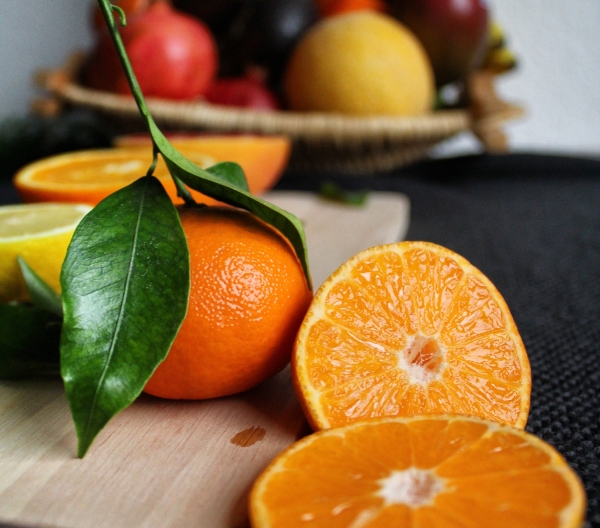Is this juice? Or is it alcohol?

dashtik - stock.adobe.com.
By Katie Marx and Rebeca Espinosa
Juice and soda companies like Mtn Dew, SunnyD, and Simply are making versions of their beverages with alcohol. Here's why their marketing matters for consumers, and how federal agencies can do a better job of keeping alcoholic beverages out of kids' hands.
Hard seltzers, hard sodas, and similar malt beverages have existed for some time now, but it was only in 2019 that the hard seltzer market exploded in growth, leaving popular brands like White Claw in temporary short supply. While the hard seltzer and soda market was previously dominated by dedicated alcohol brands, brands better known for their non-alcoholic beverages are now taking advantage of the trend.

Mtn Dew, SunnyD, and Simply are just a few examples of well-known non-alcoholic beverage brands that recently introduced their first alcohol products. Like hard seltzers, these products typically contain about 5% alcohol and are often marketed as healthier, low-sugar, and/or fruit-flavored beverages.
The marketing problem
Labeling of these new alcoholic products often contains the words “hard” or “spiked” and an alcohol percentage disclosure, but is otherwise similar—or in some cases, nearly identical—in layout and design as their non-alcoholic counterparts. The recognizable packaging combined with fruit flavoring, bright colors, and lower sugar and calorie content seems to target younger consumers like Gen Z (who industry experts believe prefer low-calorie, fruit-flavored alcoholic beverages). Concerningly, this could also attract underage drinkers or pose a risk of confusion for consumers who perceive the product as non-alcoholic because of label similarities.
How states are working to protect kids
States are taking action to ensure these products aren’t misleadingly marketed in stores. After seeing Hard Mtn Dew shelved next to non-alcoholic beverages, snack foods, and even children’s toys, Illinois issued a rule stating that these co-branded products cannot be shelved next to soft drinks, fruit juices, bottled water, candy, or snack foods if such snack foods portray cartoons or youth-oriented images. Smaller stores that may lack the square footage to do so must post a sign indicating a beverage is alcoholic and intended for consumption by people at least 21 years of age if it’s shelved next to a restricted product.
Virginia recently passed a similar law covering wine, beer, and crossover alcohol products sold outside of clearly discernable in-store locations reserved for alcoholic beverages. It prohibits retailers from stocking these products next to non-alcoholic beverages with a similar brand name, logo, or packaging as an alcoholic beverage. Retailers must also post signage on the displays for these alcoholic crossover products indicating that they contain alcohol.
Better federal oversight is necessary
State governments should continue to take action, but the federal government is responsible for protecting consumers from misleading products. The Federal Trade Commission ensures that advertising is fair and non-misleading, but the agency has typically relied on industry self-regulation to limit alcohol marketing to teenagers. Industry standards, like those developed by the Responsible Retailing Forum, discourage these marketing practices. Stronger action by the FTC highlighting these practices as unfair and misleading could do more to deter companies from seeking to attract youth with confusing marketing tactics.
The Department of Treasury’s Alcohol and Tobacco Tax and Trade Bureau (TTB) and the FDA can also take action against misleading (but not unfair) alcohol marketing to young people in their respective spheres. The TTB could also strengthen its rules to prohibit beverage manufacturers from dictating where their products are placed in the store, a practice that can lead to alcohol being marketed aggressively in retail environments. The TTB can do this by barring manufacturers from providing retailers with shelf plans or schematics for alcoholic beverage placement, a step the agency is currently considering.
Meanwhile, be sure to double-check that the seltzer you’re grabbing is in fact seltzer, and not alcohol.

Subscribe to Nutrition Action
We name names, remain strictly objective, and deliver scrupulously researched advice about food of all kinds, staying healthy with diet and exercise, and more.

